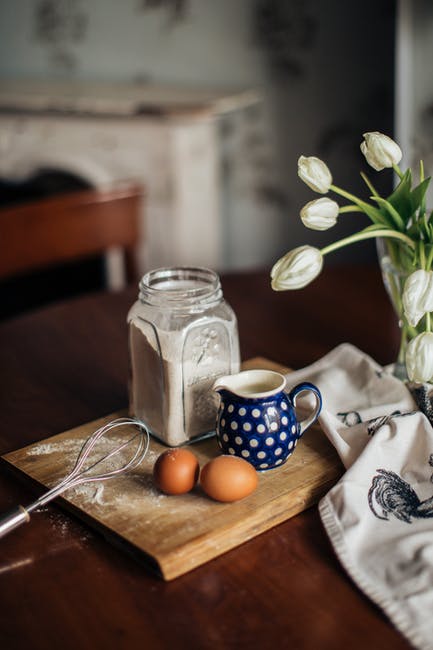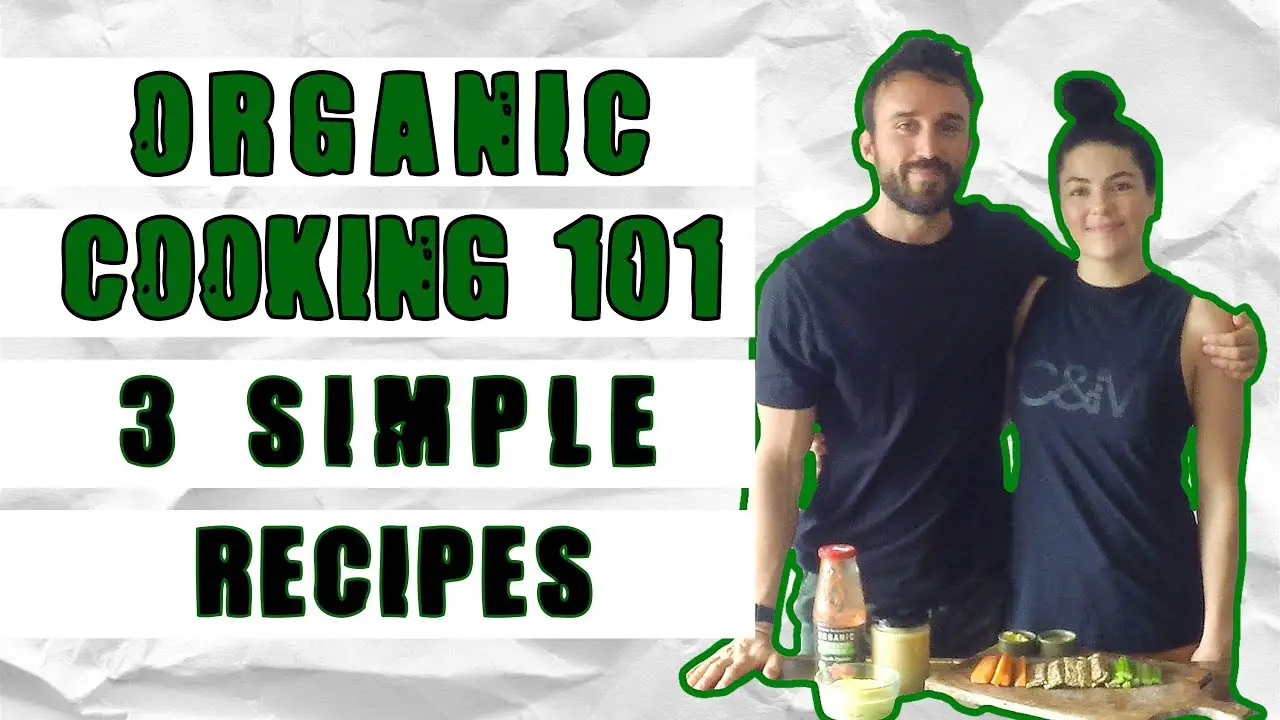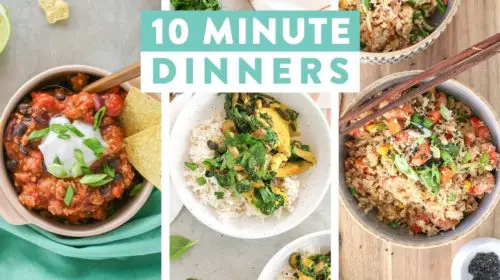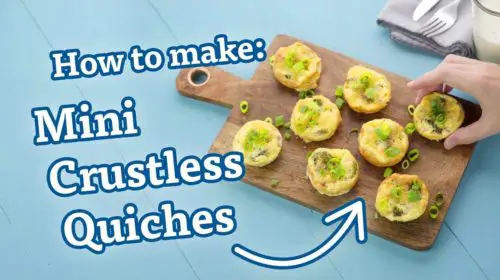Healthy Organic Cooking Tips 101: 3 Simple Recipes + 4 Essential Tips
Healthy Organic Cooking Tips
Often times so many of us get overwhelmed with the amount of choices and information out there regarding food that we tend to just retract and fall back into habitual styles regarding what foods we buy, what foods we eat, and what foods we even prepare, and what I’ve decided to do today is grab Jenn Skylas from All Good Things Organic to take us through three incredibly simple recipes, and organic cooking tips that will replace three common items
found in most kitchens.
Let’s do it. What’s up, guys? Hayden here. I’ve got Jenn here with me and like I said in the intro we’re going to go through three very simple recipes that you’ll be able to replicate at home in your own time. Whilst watching this video feel free to pause it so you can follow along correctly or you can hit the links up in he description that’s going to have the detailed recipe, also the ingredients the cost and the time to that’ll take to make.
Also, what I want to do in this video is take you through four essential principles that you should take into every meal or snack that you prepare and eat. So, Jenn, how about you give us the first one.
Four Essential Principles and Organic Cooking Tips
Okay, the first principle is that we keep it simple. Because if it’s not simple, we tend to get overwhelmed and just go to the supermarket and get the most convenient option or stop at our local takeaway joint on the way home.
Yeah, exactly right. So our first recipe that we’re going to go through is peanut butter. Jenn, how about you just talk us through the ingredients what we need to actually get this done. Okay so we’re gonna make peanut butter with just two
ingredients. We’re gonna start with 500 grams of peanuts, they’re unsalted but I’ve kept 50 grams of peanuts aside because I’m going to stir it in at the end because I like my peanut butter chunky. So do I. Excellent. So, Hayden is going to
pop all the peanuts into the food processor. Straight in here? Nice and easy. Pour it in? Go for it. Cool. What we’re gonna do now is process it for about five minutes until it starts to resemble a thick peanut butter.
Easy. Is that all? That’s all. So it’s been about two to three minutes now what do you think of that Jenn? Is it looking all right? It’s looking good, we’re getting to the consistency that we need, but we need to blend it a little bit longer. So that the nuts actually start to extract the oil.
Cool. Let’s keep going then hey? So now that’s all done, Jenn, what do we have to do now? So we’re going to add 60 grams of coconut oil. Which is also going to add some more good fats into the peanut butter. I’ll get you to do that. I’ll pour it in? Easy. And then we’re going to pop the lid on and blend it for about another minute. So now what we’re gonna do is make the chunky, right? Yes beautiful and smooth at the moment. Let’s have a look at it. But as I said, we both like chunky peanut butter. So I’m going to get you to pour 3/4 of that into there.
Leave the rest? And we’re just going to process it for about 1 or 2 seconds just to incorporate the nuts, but we don’t want to press it too much because we want to keep it chunky. Sounds good. That’s enough? Perfect. So what we’re gonna do now is just transfer the peanut butter into a glass jar. And that peanut butter will keep for about four weeks in the fridge. Ah, that’s good. Okay so that was actually really simple. It took us less than ten minutes and now we’ve got peanut butter for a whole month with only two ingredients. Why don’t we go through the second principle now Jenn. So the second principle is that we’re eating whole foods and what I mean by that is food in natural state without preservatives or without additives. So just real food basically? Yep. That’s nice and easy. So like what? Foods like tomatoes, olive oil, herbs and spices, perhaps? That’s exactly right. That’s what we’re gonna use in our homemade tomato sauce.
Healthy Organic Cooking Tips 101
All right, let’s set that up, but before that, we should, you know, taste this I think. A lot of the time when we buy tomato sauces from conventional supermarkets they tend to contain a lot of ingredients that consist of you know sugars and additives and preservatives but this is why it’s really good to be able to make your own tomato sauce so we’ve obviously got some ingredients down here Jenn. Why don’t you take us through a few of the essential ones. So first of all, we’re going to start off with tomato passata. As well as tomato paste which is going to thicken it. Normally with your conventional tomato sauce, this (the paste) is what additives are going to do to the sauce Then we’ve got olive oil, apple cider vinegar, some coco aminos, which is an alternative to having soy.
Another organic cooking tip is maple syrup which is really rich in essential minerals. It is optional, so if you don’t want to add the maple syrup, you don’t have to. And then we’ve got a combination of herbs and spices, which you can really then use as little or as a lot as you like. Cool, that makes it real easy. So, let’s get started then. What’s the first thing we need to do? We’re going to first add one cup of tomato passata.

We’ve got the little line down here, so we use that. So, one cup… Alright then we’re going to add some tomato paste. As I said, this is how we thicken it. And we’re going to add 3 tablespoons. Three of them? *whistles* The third ingredient is going to be olive oil. We will add 2 tablespoons of it. conventional tomato sauce tend to have vegetable oils which is not what we’re not designed to eat those and have a really high omega-6 ratio then what we Then we’ll add some apple cider vinegar. Just using the same tablespoon. One tablespoon of coconut aminos. All the way to the top? All the way. Cocoaminos, huh? As I said, it’s an alternative to having soy sauce. We’ll add one teaspoon of maple syrup. Just using the same teaspoon, we will then add half a teaspoon of salt. I can put it straight in? Go for it.
Depending on your own salt preference, I guess. Half a teaspoon of cinnamon. Using the same spoon, we’ll add some cracked black pepper. Cloves. A little bit of all-spice. And as I said, you can use as little or a lot of herbs and spices as you like. And finally, a small pinch with your fingers of cayenne pepper. What we’re going to do now is get the stick blender and just gently blend it up. That’s all it takes And then all I’ve done is re-use my glass jar for the tomato sauce which will keep for up to two weeks in the fridge. Cool. What about if people don’t have a stick blender? What’s the alternative? With this particular recipe you could just hand whisk it. There are not ingredients in it that you need to blend up.
Cool and it might seem like there’s a lot of ingredients there but obviously it takes what less than five minutes to prepare definitely so and it’s simple And it is only using whole foods. And it’s simple 😉 again make sure you check out the links in the description that’s gonna have the full list of what ingredients you need and also the complete recipe so you can just follow along in your own time.
Healthy Organic Cooking Tips
But Jenn we should taste this tomato sauce. What do we have here, sausage? Yep, some sausage. So the third and final recipe is going to be mayonnaise, and why’d you pick that one, Jenn? I picked mayonnaise because in my opinion it is one of the worst condiments on the shelf. It’s highly processed, it’s full of high fructose corn syrup, sugar, vegetable oil, preservatives, additives, and the list goes on. Yep and I guess it’s one condiment that’s found in a lot of people’s kitchens so this is gonna be real helpful for people. Okay are also we need to talk about the third principle here and that’s nutrient density so what does that mean Jenn? It means many nutrients as you possibly can for the calories you consume me so kind of like that whole empty calories thing? Right, exactly. Perfect. So what ingredients do we need for this mayonnaise? We are going to start with four egg yolks, straight into the food processor. Then we are going to add two teaspoons of dijon mustard. Two teaspoons of apple cider vinegar. A tablespoon of lemon juice. Already prepared.
Pinch of salt and a pinch of pepper. Now we are just going to process that for about thirty seconds. On high. cool is that looking alright? It looks good. So the most important thing with making mayonnaise is when we’re pouring the oil we need to make sure that we’re pouring really slowly if you do it too fast then your mayonnaise is going to split. Okay got it. So straight to the top of this while the motor is running, we’ll turn it on low. We’re just going to pour a slow, steady stream. Slower Slower. That was hard. Keeping that consistent pour. Yep, it’s very tempting to just pour it all in. What about if people don’t have food processors? What’s the best alternative? Good old hand whisking. Hand whisking will work? It will work, it just obviously will take a little bit more effort (and time). And the stick blender could do it? The stick blender could work for sure.
Cool, so that’s it, that’s done? Yep. So while I’m serving up the mayonnaise, Jenn, why don’t you talk us through principle number four. So principle number four is that the food we’re making tastes good. Because if the food doesn’t taste good, then we’re not going to make it. Yep, 100%. So there you have it. That’s three really simple recipes that you’ll be able to do at home. Remember to check out the description to get the full ingredients list. Also the cost and the time that it will take you to prepare it. Jenn, let’s go through the four essential principles again. So the first one was… Simple; easy to do, easy to understand. The second one? Eating wholefoods, so, foods in their natural state. And the third? Eating nutrient dense foods. And the fourth was taste, right? So let’s try this mayonnaise out. I hope you enjoyed these organic cooking tips as much as I did.






